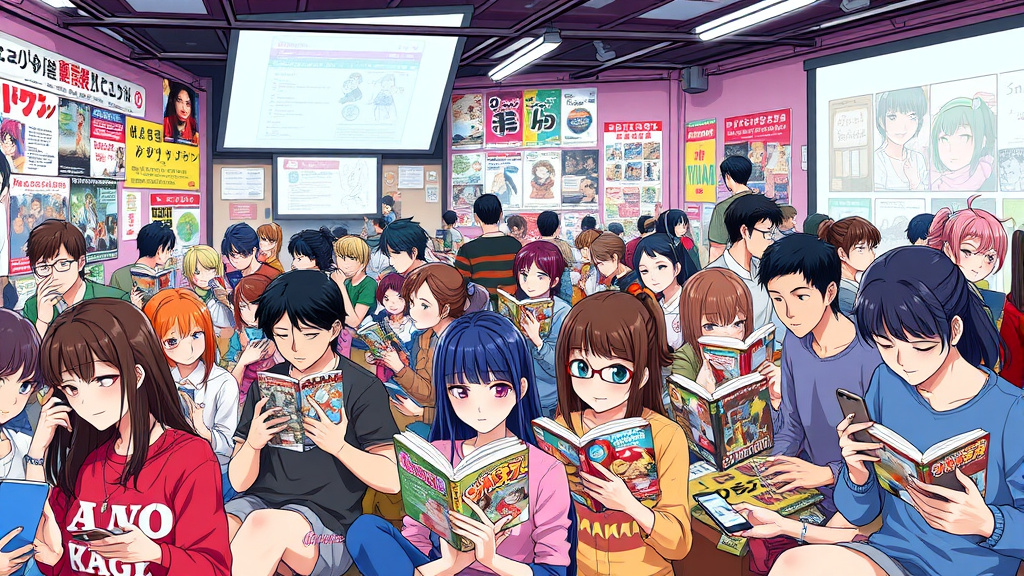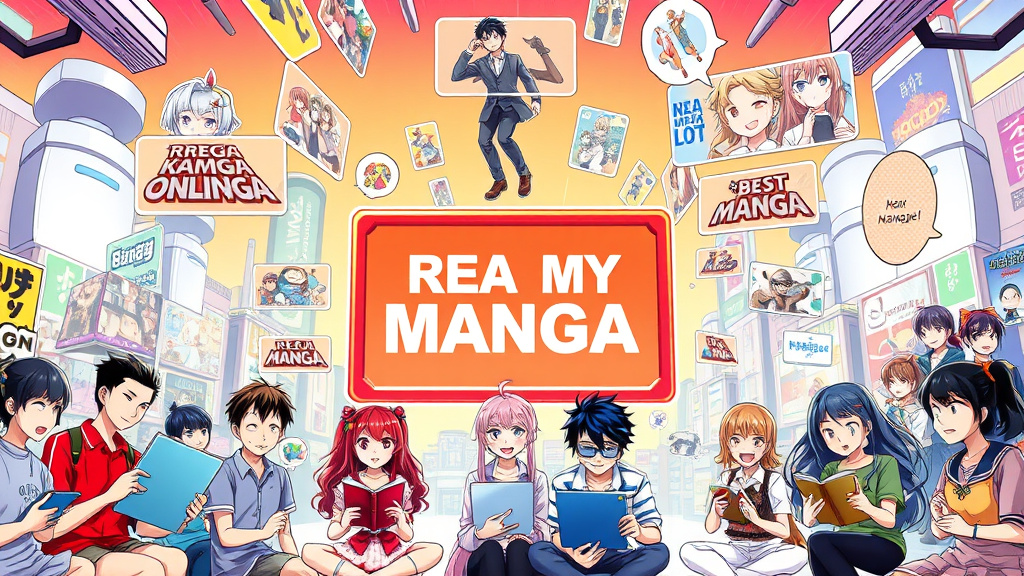gay manga has become an increasingly prominent and influential genre within the larger world of Japanese comics, offering a nuanced exploration of LGBTQ+ themes, complex characters, and diverse storytelling techniques. Its unique blend of artistry, cultural reflection, and social commentary has garnered a worldwide readership eager for authentic, relatable, and thought-provoking narratives. By delving into the depths of gay manga, readers can uncover not only the genre's artistic evolution but also its impacts on societal perceptions of LGBTQ+ identities and relationships.
In this article, we will explore various facets of gay manga, including its origins, thematic diversity, cultural implications, and the trailblazing creators shaping its future. Whether you’re a seasoned manga enthusiast or new to the genre, understanding these elements provides a richer appreciation for gay manga’s vital role in both entertainment and social discourse.
Exploring the Landscape of Gay Manga - Themes, Trends, and Representation
Gay manga is a vibrant and multifaceted genre that traverses numerous themes, from tender romance to gritty realism, often reflecting the diverse experiences of LGBTQ+ individuals in Japan and beyond. A key aspect of its appeal lies in its ability to authentically portray complex emotions, societal challenges, and personal growth, thereby fostering empathy and understanding among its readers. In recent years, trends have shifted towards more nuanced, diverse representations that challenge stereotypes, highlighting characters’ individuality rather than solely focusing on their sexuality.
One notable trend in gay manga is the increasing inclusion of non-traditional relationships and gender dynamics, embracing fluidity and diversity within the LGBTQ+ spectrum. This shift indicates a growing recognition of intersectionality and an effort to portray queer identities beyond conventional narratives. For many readers, gay manga acts as both a mirror and a window—reflecting their own experiences and opening up new perspectives—making it an essential part of contemporary manga culture. Its storytelling prowess lies in blending visual artistry with compelling narratives, ensuring its place as a significant cultural force.
 Hình minh họa: gay manga – top manga
Hình minh họa: gay manga – top mangaA Brief History of Boys' Love (BL) Manga - Origins and Evolution
The roots of gay manga can be traced back to the late 20th century, with Boys’ Love (BL) manga emerging as a prominent subgenre in the 1970s and 1980s. Initially rooted in female readership, BL tangentially explored romantic and sexual themes between male characters, often emphasizing emotional intimacy in ways that challenged heteronormative standards. Early works drew inspiration from Western literature and literature-inspired manga, gradually evolving into a distinct genre with its conventions and storytelling techniques.
Throughout the decades, BL manga matured both in content and cultural significance. It transitioned from niche underground works to mainstream publications, influencing broader perceptions of male-male relationships and contributing to the visibility of queer identities. The genre’s evolution is characterized by a move toward greater authenticity, diversity, and social relevance, reflecting changing attitudes in Japanese society and inspiring similar movements worldwide. This historical journey highlights how gay manga serves as both an artistic expression and a catalyst for social change.

The Appeal of Gay Manga - Understanding the Readership and Their Motivations
The appeal of gay manga extends beyond the simple desire for entertainment; it serves as a vital representation of LGBTQ+ lives and experiences, offering solace and validation to many readers. For individuals who identify as LGBTQ+, gay manga provides a space for exploration, affirmation, and comfort—especially in cultures or environments where open discussions about sexuality remain taboo. Its diverse stories can affirm identities, foster community, and support mental well-being in profound and meaningful ways.
Beyond its relevance to personal identity, gay manga attracts a broader audience interested in nuanced storytelling, compelling characters, and beautiful artistry. Many readers are drawn to its emotional depth—exploring themes of love, acceptance, conflict, and societal pressure—making it a versatile genre that appeals to both LGBTQ+ individuals and allies. In a global context, the genre’s increasing popularity signals a shift toward more inclusive narratives in mainstream media, challenging stereotypes and promoting empathy across cultures.
Beyond Romance - Examining Diverse Genres and Storytelling in Gay Manga
While romance remains a central theme within gay manga, the genre’s versatility extends into many other storytelling domains, including drama, comedy, historical settings, fantasy, and horror. This diversity allows creators to explore complex social issues—such as discrimination, identity struggles, familial acceptance, and mental health—within compelling narrative frameworks. As a result, gay manga serves as a mirror to societal realities while also offering escapism and entertainment.
Innovative creators are pushing boundaries by blending genres, developing unconventional character arcs, and experimenting with visual styles. Some stories focus on realistic portrayals of queer relationships, advocating for social change, while others use allegory and fantasy to subtly address cultural taboos. This multiplicity of storytelling avenues enriches the genre, making gay manga not only a vehicle for love stories but also a platform for activism, cultural critique, and artistic expression.
Cultural Perspectives on LGBTQ+ Representation in Manga
Japanese culture has historically held varying attitudes toward LGBTQ+ identities, ranging from acceptance in certain contexts to strict societal norms. Within manga, LGBTQ+ representation has often oscillated between stereotypical portrayals and groundbreaking narratives that challenge social conventions. Gay manga reflects these cultural dynamics, serving as both a reflection and a product of societal attitudes, influencing perceptions and fostering dialogue.
The genre grapples with cultural nuances—such as the phenomenon of bakemono (mythical creatures) or oshi (favorite characters)—highlighting complex relationships between gender, sexuality, and societal expectations. As Japanese society becomes more open to diverse identities, gay manga is increasingly incorporating authentic experiences and varied identities, broadening its cultural impact. It can act as a bridge, fostering greater understanding and acceptance domestically and globally.
The Impact of Gay Manga on LGBTQ+ Visibility and Acceptance
Gay manga has played a pivotal role in increasing visibility for LGBTQ+ communities, breaking down stereotypes, and fostering dialogue about sexual and gender diversity. By depicting authentic relationships and characters that resonate with marginalized individuals, the genre promotes acceptance and normalizes queer identities in mainstream culture. Its influence extends beyond entertainment—serving as an educational tool that challenges misconceptions and nurtures empathy.
Moreover, the genre’s international popularity has amplified its social impact, contributing to global conversations about LGBTQ+ rights and representation. As more diverse voices emerge within gay manga, it continues to push boundaries, challenge societal taboos, and advocate for equality. Its cultural significance is a testament to the power of storytelling in shaping societal perceptions and fostering inclusive spaces.
Key Creators and Influential Works in the Gay Manga Genre
Among the most influential figures in gay manga are creators like Junjo Ito, artist of darker, horror-themed narratives, and Yukinobu Hoshino, whose works incorporate sci-fi elements. Pioneering authors such as Moto Hagio and Keiko Takemiya laid foundational groundwork in the 1970s, pioneering innovative storytelling styles and expanding thematic depth. Their works have left an indelible mark, inspiring generations of creators and expanding the genre’s horizons.
Contemporary titles like Yesterday wo Utatte and Ten Count have garnered acclaim for their mature storytelling and complex character portrayals. These works demonstrate how gay manga has evolved into a genre that balances emotional nuance with artistic craftsmanship. The influence of these creators and their influential works underscores gay manga's vital role in both cultural and artistic landscapes, continuously shaping its trajectory.
Navigating the Controversy - Addressing Criticisms and Ethical Considerations in Gay Manga
Despite its cultural significance, gay manga faces criticism related to stereotypes, sexualization, and the portrayal of relationships, which can perpetuate misconceptions about LGBTQ+ individuals. Some works may reinforce problematic tropes or exploit vulnerabilities, raising ethical concerns about responsible storytelling. Transparency and sensitivity from creators are essential to ensuring the genre promotes respectful, authentic representations rather than sensationalism.
The controversy often revolves around balancing artistic freedom with social responsibility. While some critics argue that certain portrayals empower harmful stereotypes, others emphasize the importance of diverse narratives that reflect real experiences. Promoting ethical practices within gay manga involves fostering more inclusive and multifaceted stories, encouraging creators to approach their subjects with respect and awareness. Ultimately, the genre's growth depends on navigating these challenges thoughtfully, prioritizing authentic voices and social impact.
The Future of Gay Manga - Emerging Trends and Expanding Audiences
The future of gay manga is promising, with emerging trends focusing on inclusivity, digital accessibility, and cross-cultural exchange. Advances in publishing technology, such as webcomics and online platforms, have democratized access, allowing creators to reach global audiences without traditional gatekeepers. As a result, stories that are more diverse, experimental, and representative are gaining prominence, embodying the evolving landscape of LGBTQ+ narratives.
Additionally, collaborations between creators from different cultural backgrounds are opening new avenues for storytelling, fostering a richer, more interconnected gay manga community. Trends like gender fluidity, non-binary characters, and stories that challenge societal norms are gaining momentum. As societal acceptance grows and marginalized voices find platforms to be heard, gay manga’s future looks vibrant, innovative, and impactful—an artistic landscape that continues to push boundaries and foster understanding.
Where to Find and Explore Gay Manga - Resources and Recommendations
For those interested in exploring gay manga, a variety of resources are available both online and in print. Major manga publishers and digital platforms like Manga Plus, ComiXology, and Webtoon host a diverse selection of titles, many with dedicated tags or categories for LGBTQ+ content. Specialty stores and online shops such as Amazon or Book Depository also carry a curated selection of key works and popular series.
To deepen your understanding, consider engaging with community forums, reviews, and fan discussions on platforms like Reddit or MyAnimeList, where enthusiasts share recommendations and insights. Prominent titles like Given, Ten Count, Junjou Romantica, and Sasaki to Miyano are excellent starting points for newcomers. Whether seeking authentic stories or artistic explorations, the wealth of gay manga resources offers an accessible gateway into a genre that’s continually evolving and enriching global pop culture.
Conclusion
Gay manga stands as a powerful and dynamic genre that artfully blends storytelling, social commentary, and artistic expression to portray LGBTQ+ experiences in complex, meaningful ways. Its history from niche beginnings to mainstream recognition reflects ongoing societal shifts toward greater acceptance and understanding. Through diverse themes, groundbreaking creators, and expanding audiences, gay manga continues to break stereotypes, foster visibility, and inspire change worldwide. As digital platforms and cultural dialogues grow more inclusive, the genre’s future promises even greater richness, innovation, and impact—affirming its essential place in both manga art and society at large.





